The 10 Best Hardwood Species For Wide Plank Flooring
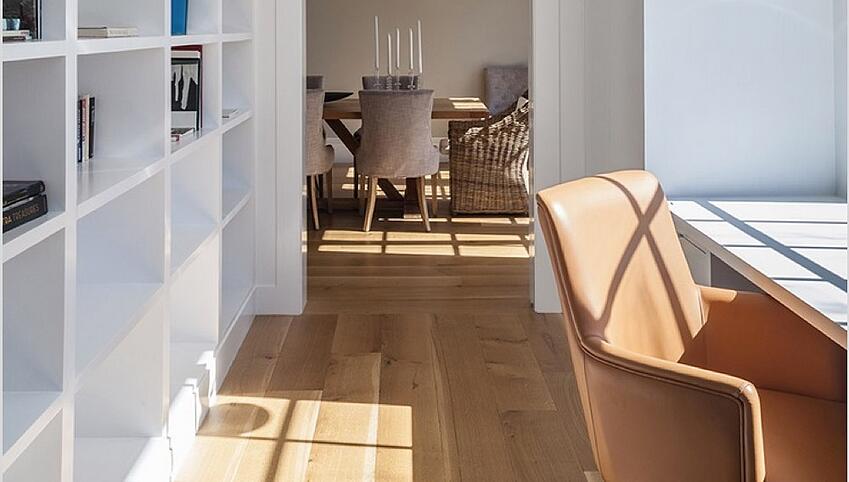
You undoubtedly remember the feeling of standing in front of the candy counter as a kid with a few quarters in your pocket, trying to pick the best option to satisfy your sugar craving. Hard candy or chewy? Sweet or sour?
Cherry, or watermelon, or grape flavored? The choices were agonizing, but the results would be glorious on your tongue, regardless.
Welcome to the adult version; choosing the right species for your hardwood flooring. The options are almost as plentiful, and you can’t really go wrong. But unless your candy counter sold Wonka’s Everlasting Gobstopper, you’ll be living with your flooring choice infinitely longer than the sugar high lasted. How to choose?
The Key Hardwood Traits
Each hardwood species comes with its own unique traits. The variables that most likely will drive your hardwood flooring choice are color, brightness, character, and durability. Color and brightness are the most obvious to your eye. Is the wood dark brown, golden yellow, or creamy reddish, and how will that color complement existing cabinetry and furniture in your home? Is that coloration muted or bright, and will it help you lighten a small dark room or soften one with lots of south-facing windows?
Character stems from the complexity of the grain pattern and the variation of colors within each plank or from one plank to the next. Some species possess striking grain designs, swirls, and patterns, as well as mineral streaks and stark color variations. Others provide greater color consistency and a straighter, or less visible, grain pattern. What will fit in with the aesthetics of your home most comfortably?
Durability refers to the species’ hardness and natural resistance to scratching. A wood’s relative hardness is rated by the Janka Hardness Test, which measures the force needed to embed a steel ball to half its diameter in a piece of wood. The higher the number, the harder the wood. Janka provides a general guide, at best, as the type of construction and the finish applied to the planks can also play a role in their durability. Note that all wood floors can be scratched or dented in the right (or wrong) situation, but the Janka scale does provide valuable insight into which species are more or less likely to become damaged over time. If you have pets, kids, or you play hard at home, durability might rise in importance for you. But if you live a more quiet existence with your shoes off, this should be less of a factor for you.
THE 10 BEST DOMESTIC HARDWOOD SPECIES
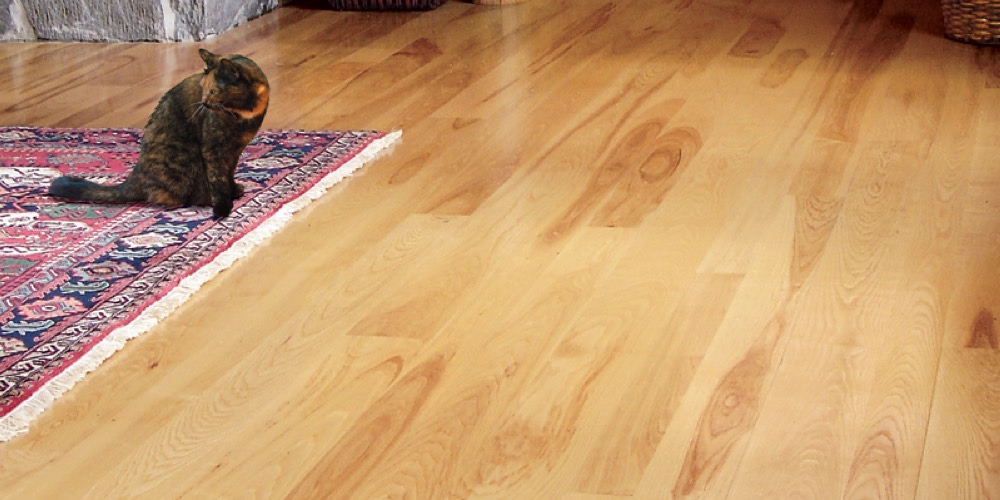
Ash Plank Flooring
Ash’s rich character stems from its striking grain patterns and coloration. Its coarse grain is typically straight, with occasional moderate swirls, figures, and knots. Its colorings vary. Its heartwood can include grey, creamy light brown, and pale yellow sometimes streaked with medium brown. The sapwood, which will vary in degree depending on the region in which the trees grew, can be wide and quite light—a gentle beige to almost white—with a sometimes-unclear demarcation from the heartwood. These variations result in a striking glow and richness that brightens any room. Ash is a relatively dense, highly shock-resistant, resilient wood with a Janka rating of 1320. It also possesses a unique elasticity. These factors make it ideal not only for baseball bats but for flooring as well. See more Ash Wide Plank Flooring.
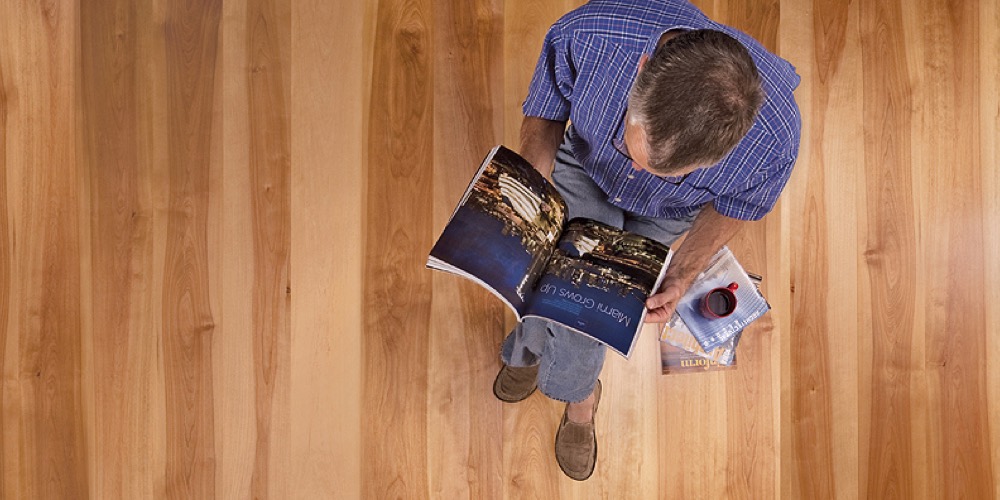
Birch Plank Flooring
Birch’s sunny yet sturdy disposition has prompted a growing popularity and stature. Its color contrasts are a defining component of its allure—a creamy white or golden sapwood, combined with its typically brown or dark reddish heartwood, make for a striking one-two punch. Layer in a primarily straight grain pattern punctuated by occasional curls, waves, and cathedral markings, and you’ve got a knockout that will enliven any room. Birch’s papery bark might suggest a thin skin, but beneath that soft exterior is a surprisingly durable wood (1260 on the Janka scale). It is a heavy, strong wood, with good crushing and shock resistance. That means, if you’ve got kids, pets, and regularly throw all-night dance parties, or if you just want to feel confident that your flooring will stand up to regular wear, birch’s durability will let you rest easy. See more Birch Wide Plank Flooring.
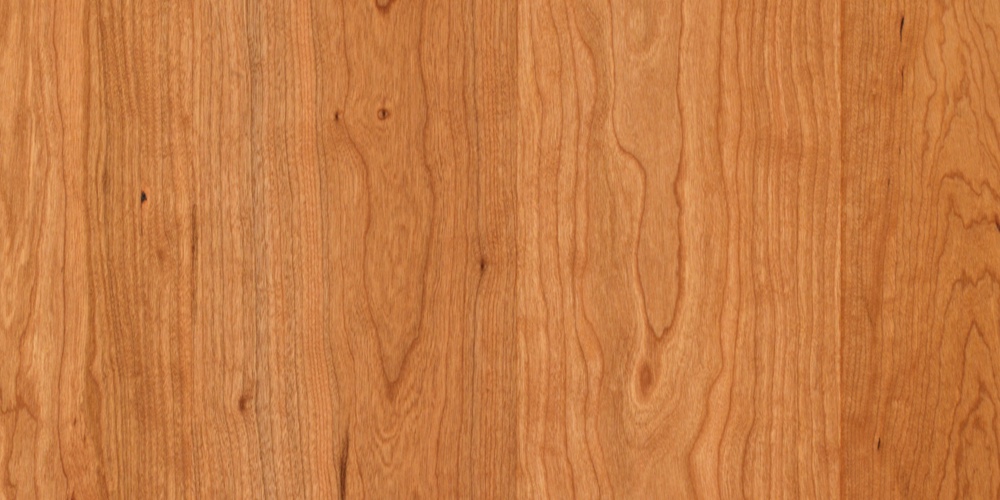
Cherry Plank Flooring
With deep, elegant, lustrous red hues, satiny texture, and gentle, swirling heartwood, cherry provides warmth in any room, from rustic to formal. Its deep, rich, character is both comforting and elegant. Exposed to air and light, it uniquely darkens with age to a lustrous auburn tone, evolving and becoming more resonant, like a fine wine. Cherry’s moderate density makes it one of the softer hardwoods (950 on the Janka scale), so if you have extensive foot traffic in your house, you’ll need to be prepared for some impact. See more Cherry Wide Plank Flooring.
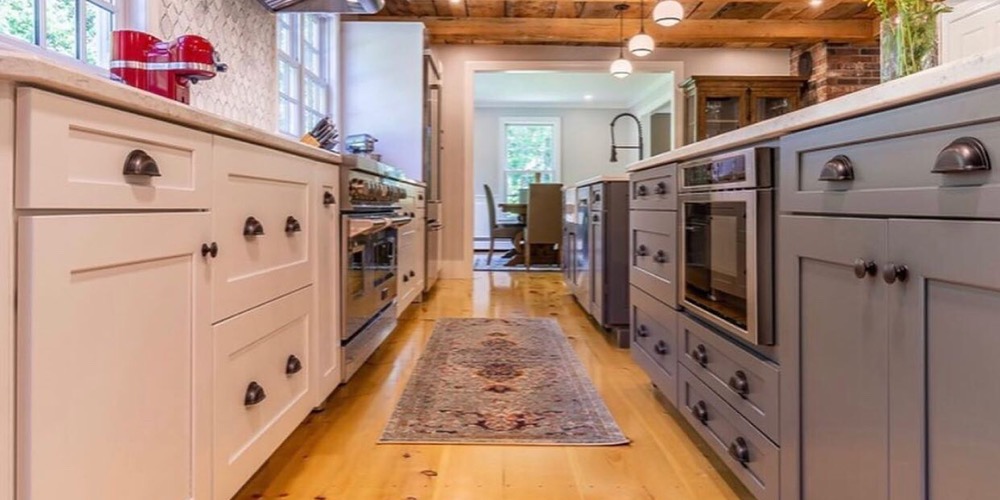
Eastern White Pine Plank Flooring
Eastern white pine grows slowly, which results in a tight, smooth, inconspicuous grain pattern with occasional large knots. Its color typically falls somewhere between pale yellowish tan to light reddish brown. Eastern white pine provides an earthy quality, and a natural welcoming warmth and humble charm that is perfect for a casual home. If you are looking for flooring that is an impenetrable fortress, however, look to another species. Eastern white pine is technically a soft wood with a 380 rating on the Janka scale, so it will ding and dent. But those accumulated imperfections create a patina—character enhancements that add to the charm and appeal. Over time, extensive foot traffic will prompt eastern white pine flooring to harden as the wood’s fibers compress, resulting in a foot-worn floor that will last for hundreds of years. See more Eastern White Pine Plank Flooring.
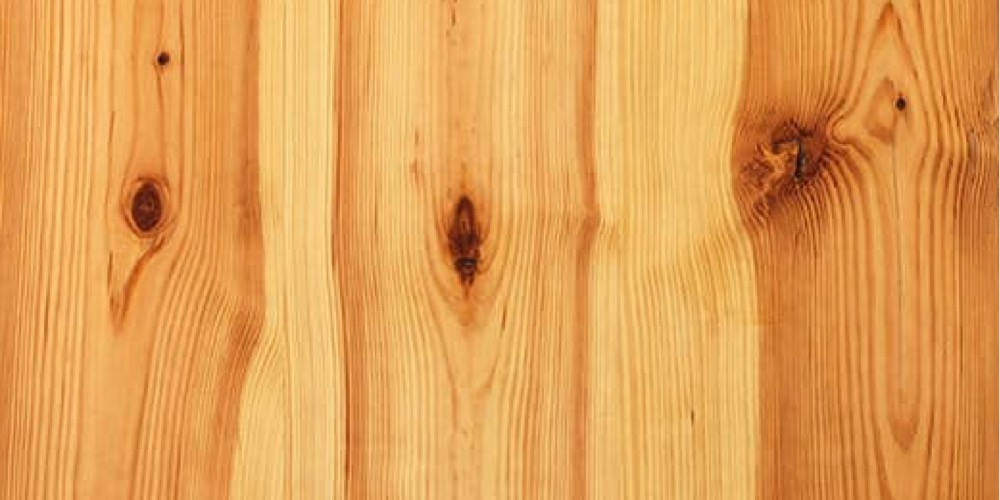
Heart Pine Plank Flooring
Heart pine is actually the heartwood of the longleaf pine tree. Freshly cut, heart pine possesses a yellowish hue, but with passing time, its resin content pushes the coloring toward a pinkish tan or comfortable russet. The grain is dense and primarily straight, with some figures, swirls, and cathedrals, and is punctuated by the occasional knot. The wood possesses a dynamic balance of color, tone, and richness heralding itself as an architectural classic, yet simultaneously suggesting comfortable compatibility with generations to come. Though technically a softwood, its slow maturation creates a wood with tight growth rings and a strength, stability, and density (1220 on the Janka scale) on par with many durable hardwoods. See more Heart Pine Plank Flooring.
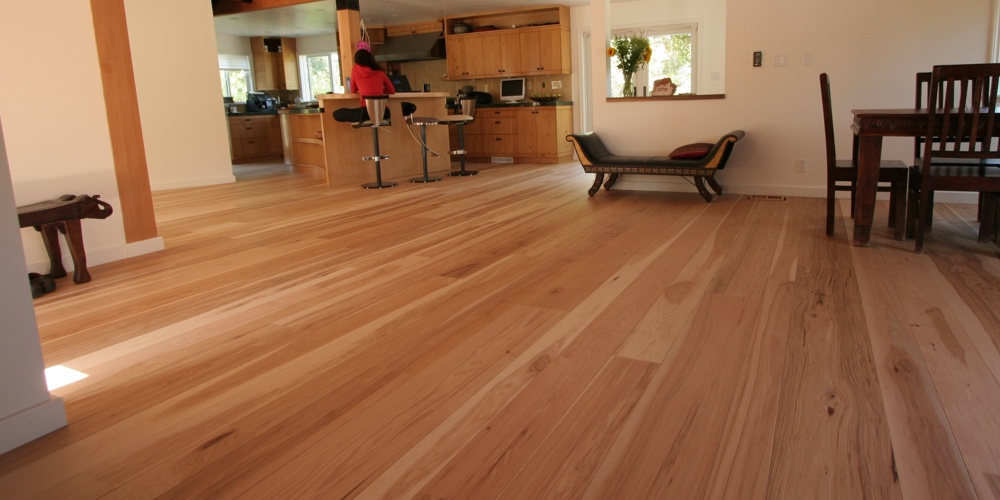
Hickory Plank Flooring
Installing hickory flooring in your home is like receiving a two-for-one deal. You’ll get a dramatic hardwood floor with a built-in “insurance policy” at no extra cost due to its durability. Aesthetically, if you are looking for uniformity, you might consider a different species. Hickory’s slow growth prompts pale- to reddish-brown heartwood, juxtaposed with creamy blonde sapwood. Add to that distinctive and dense, bright gold grain patterns and you’ve got some excitement on each and every board. Hickory’s slow growth also provides wood that is dense, stiff, and hard—1820 on the Janka scale. That makes hickory incredibly resistant to shocks, dents, bends, and scratches. Axe handles are also made of hickory, for good reason. See more Hickory Wide Plank Flooring.

Maple Plank Flooring
Maple is probably not the best option if you are looking for a dramatic grain and a variety of visual textures in your flooring. Its preeminent buttery flaxen coloration and subtle uniform grain creates a bright, clean, harmonious look that has made it a perennial flooring favorite. Maple optimizes natural light and its radiance will enliven any space. Additionally, maple is extremely durable. Just consider the maple bowling pin at the receiving end of the bowling ball. With a Janka rating of 1450, maple sits near the top of the chart for domestic hardwoods when it comes to hardness. That means it is less prone to dents. Maple can show scratches however, which makes the choice of a quality protective finish critical. See more Maple Plank Flooring.
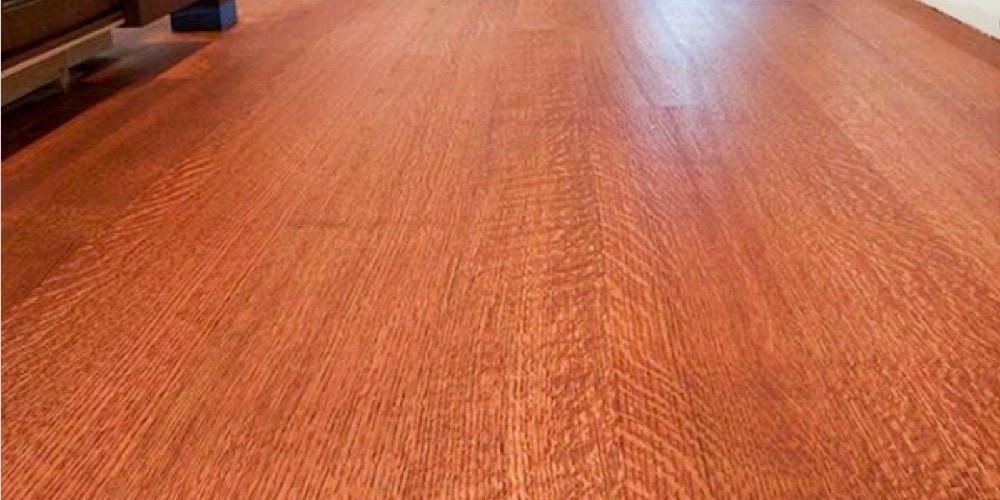
Red Oak Plank Flooring
If you seek a timeless classic, red oak might be just the ticket. Red oak’s universal appeal is driven by three factors; color, grain, and the resulting versatility those aesthetic characteristics provide. The wood’s natural color tends to range from creamy reddish pinks to gentle shades of brown, with occasional white to light brown sapwood. Red oak is most noted for its strong grain characteristics, which tend to be coarsely patterned with pronounced cathedrals and occasional small knots. Although there are a few species higher on the hardness scale, Red oak (1290 Janka rating) is considered the industry standard when discussing hardness, meaning that the hardness of other hardwoods is generally referenced in comparison to red oak. In general, it is a durable and tightly grained wood that holds up well in high-traffic areas. See more Red Oak Plank Flooring.
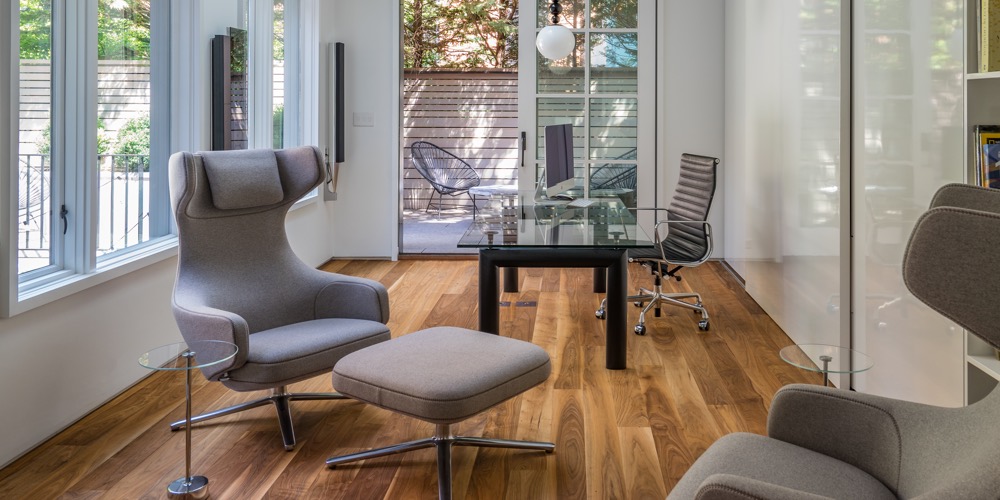
Walnut Plank Flooring
Walnut provides a visual treat treasured by the finest woodworkers and held in the highest esteem by wood connoisseurs. It is characterized by a luminous, coffee bean-brown color with purplish overtones and swirling golden sapwood patterns. Its predominant straight grain sometimes teases the eye with some waviness or an occasional decorative curly figure. Walnut’s richness provides an elegance and sophistication to any room. Walnut is a moderately dense, medium-hard flooring option, rated 1010 on the Janka scale. It is somewhat susceptible to dents and scratches, so you will need to consider measures to maintain it in good condition. However, walnut accepts stain and finish beautifully, which adds a critical layer of security. See more Walnut Plank Flooring.
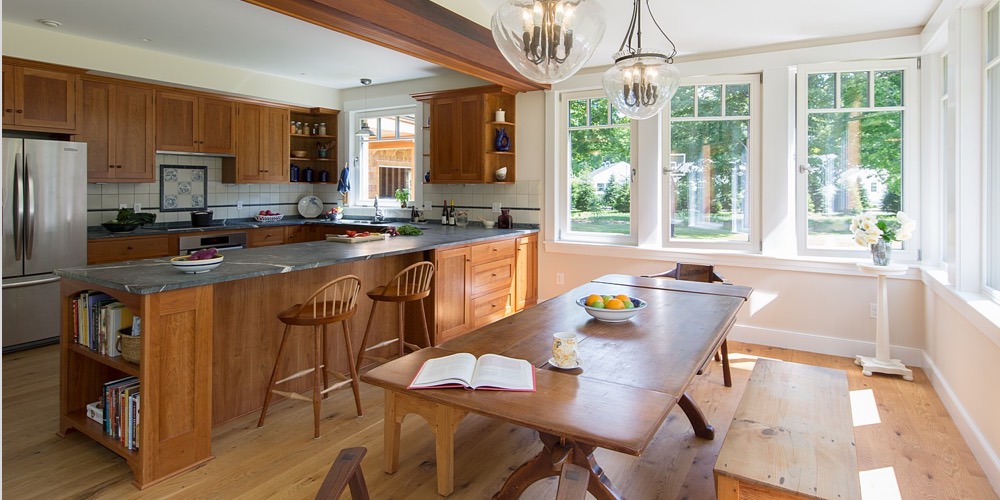
White Oak Plank Flooring
Despite its name, white oak glows with light brown hues highlighted by golden and grey tones that, along with its dynamic grain patterns and when coupled with a variety of popular finish options, results in a rich and versatile floor that complements everything from traditional to contemporary design preferences. White oak is one of the more durable domestic hardwoods available. On the Janka scale, white oak is rated at 1360, behind only hickory and maple. But durability is more than just hardness. White oak accepts finishes and stains quite well, which further protect it. And its tight, patterned grain hides wear and tear without appearing worn, making it ideal for high-traffic areas. See more White Oak Plank Flooring.







